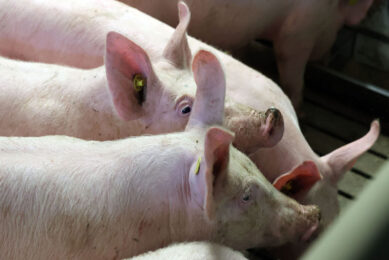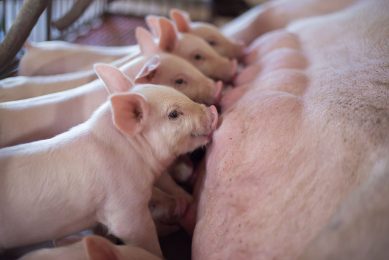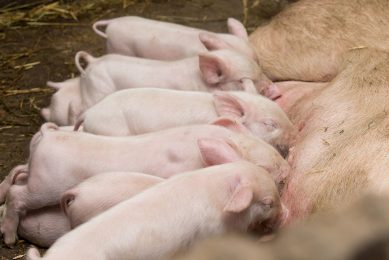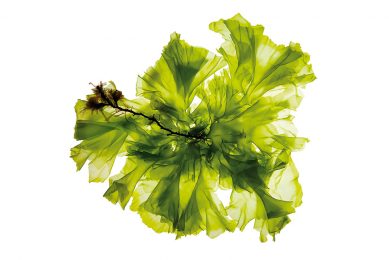Family feeding: More piglets will eat prior to weaning
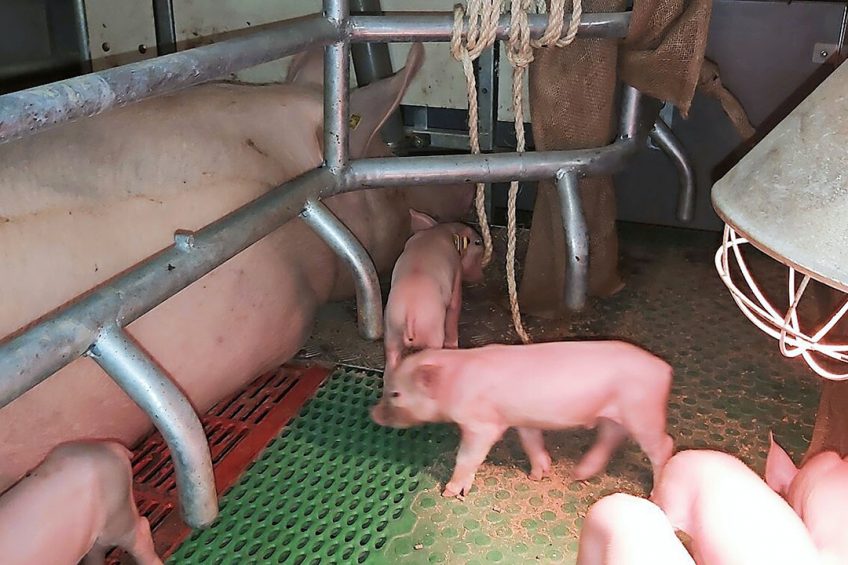
Collaborative research in the Netherlands has shown that more piglets can start eating prior to weaning, they can grow faster and display better behaviour when they are supplied according to the so-called “Family feeding” system.
Those were some of the main conclusions of a 3-year long research project called “Family Feeding Matters,” in which Wageningen University and Research (WUR) served as executive partner. The project was initiated by the Netherlands Ministry of Agriculture, Nature and Food Quality (LNV), livestock equipment company Vereijken and Trouw Nutrition.
Developing a new feeding concept for sows and piglets
The aim of the project was to develop an innovative feeding concept for sows and piglets that would meet their natural behaviour. The innovative part of the research would apply to the new feeding and the drinking system as well as a new feeding type.
The theory behind the new concept is that sows would teach piglets how to eat and drink, thus optimising feed intake of piglets around weaning, leading to a reduction of the negative effect of weaning on aspects like welfare and health. The Family feeding system as well as the Family feed were implemented and optimised at the Pig Innovation Centre (VIC) Sterksel, in the south of the Netherlands.
On the basis of the 3-year research, the scientists also concluded that the Family feeding system approach had no impact – or even a negative one – on technical performance and diarrhoea straight after weaning. The Family feed itself was observed to have a negative effect on tail biting behaviour as well as diarrhoea, and had no impact on technical performance.
Trial set-up involving 4 feed treatments
To reach all those conclusions, the Family feeding system as well as the Family feed were put to the test using lactating sows and piglets until 9 weeks of age. They were compared to results of sows and piglets held in conventional pens and fed conventional lactation and piglet feed. The validation research, including all in all 4 treatments, was carried out with in total 104 lactating sows and their piglets and 1,040 weaned cross-bred piglets.
The Family feeding system
The Family feeding system was created to reflect elements of natural feeding as it provides a social eating and drinking place where piglets interact with the sow to familiarise themselves with solid feed at an early stage. That also integrates “play” elements into feeding by including enrichment materials around the feeding place.
In that system sows were fed semi-unrestricted on a floor of 0.70m wide and 0.92m deep, allowing the piglets to eat together with the sows. In addition, the piglets were given feed in a round playing trough. Adjacent to the feeding floor there was a drinking bowl on the floor which would provide ad lib water for both sows and piglets. The sow box had been widened, allowing the sow to have more space at the front. Sows and piglets had more enrichment materials at their disposal.
After weaning the piglets were fed with a dry feeding trough with 2 compartments. The first 4.5 days after weaning the piglets were also fed in the round playing trough. In it, the sow feed and piglet feed were supplied 50:50%. Drinking water was ad lib at their disposal through a drinking bowl they had at their disposal in the farrowing house.
Most important conclusions with regard to the feeding system are:
Prior to weaning:
- The Family feeding system did not influence the sows’ weight loss or backfat thickness, but it did lead to a higher usage of sow feed;
- The Family feeding system improved the learning to eat prior to weaning (10% non-eating piglets vs 22% non-eating piglets in the control system). Piglets grew more during lactation and had a higher weaning weight as a result;
- Piglets in the Family feeding system had fewer aggression related skin lesions, tail lesions or ear lesions than piglets from the control feeding system;
- The sows’ relative freedom of movement allowed sow-to-sow and sow-to-piglet contact, plus a better way to keep an eye on the piglets;
After weaning:
- The Family feeding system did not impact growth or feed intake throughout the weaning phase, and did not impact final bodyweight. Feed conversion was higher in the in comparison to the control feeding system. That was mainly due to the first 9 days post-weaning, when the piglets from the Family feeding system put on less weight and used more feed. The percentage of piglets having diarrhoea during the first week post-weaning was higher in the Family feeding system. The piglets, however, were showing less ear and tail biting than piglets from the control feeding system.
The Family feed approach
The Family feed’s ingredient profile and physical composition included nutrients tailored to support piglets’ digestive and oral motoric capacity and sows’ optimal nutrition. In addition, the texture, pellet size and aroma of the feed were optimised to stimulate feeding behaviour. The inclusion of recognisable flavours into the feed profile from the gestating to the lactating phase until the nursery, reinforced the sensory cues that piglets received from the sow even before farrowing. That flavour component imprints the feed with “mother scent” and helped piglets recognise it as safe to eat.
Sows were supplied with Family sow feed and the piglets received Family piglet feed. In the first 9 days after weaning, the piglets were supplied with Family piglet feed, after which it turned to conventional piglet rearing feed. The Family piglet feed consisted of pellets with different diameters (4 and 12 mm) and different lengths (10-30 mm).
Most important conclusions towards feed were:
Before weaning:
- The Family feed did not impact weight loss, backfat thickness or sow feed use.
- The Family feed did not influence the percentage of eaters or the piglet growth during lactation. Prior to weaning the piglets receiving the Family feed had more skin lesions than those piglets receiving the control feed.
After weaning:
- The Family feed did not impact growth and feed intake throughout the entire piglet rearing phase, the piglets’ final weight, or feed conversion. The percentage of piglets with diarrhoea was higher until day 12 post-weaning in comparison to control feed.
- Piglets receiving Family feed showed more tail biting; at some days the percentage of piglets without ear lesions was lower for Family feeding.
The research publication “Family Feeding Matters” was authored by C.M.C. van der Peet-Schwering, A.I.J. Hoofs and G.P. Binnendijk, Wageningen Livestock Research, the Netherlands; J.E. Bolhuis, Wageningen University, the Netherlands; H. van Hees, Trouw Nutrition; and Q. Dees, Vereijken.




